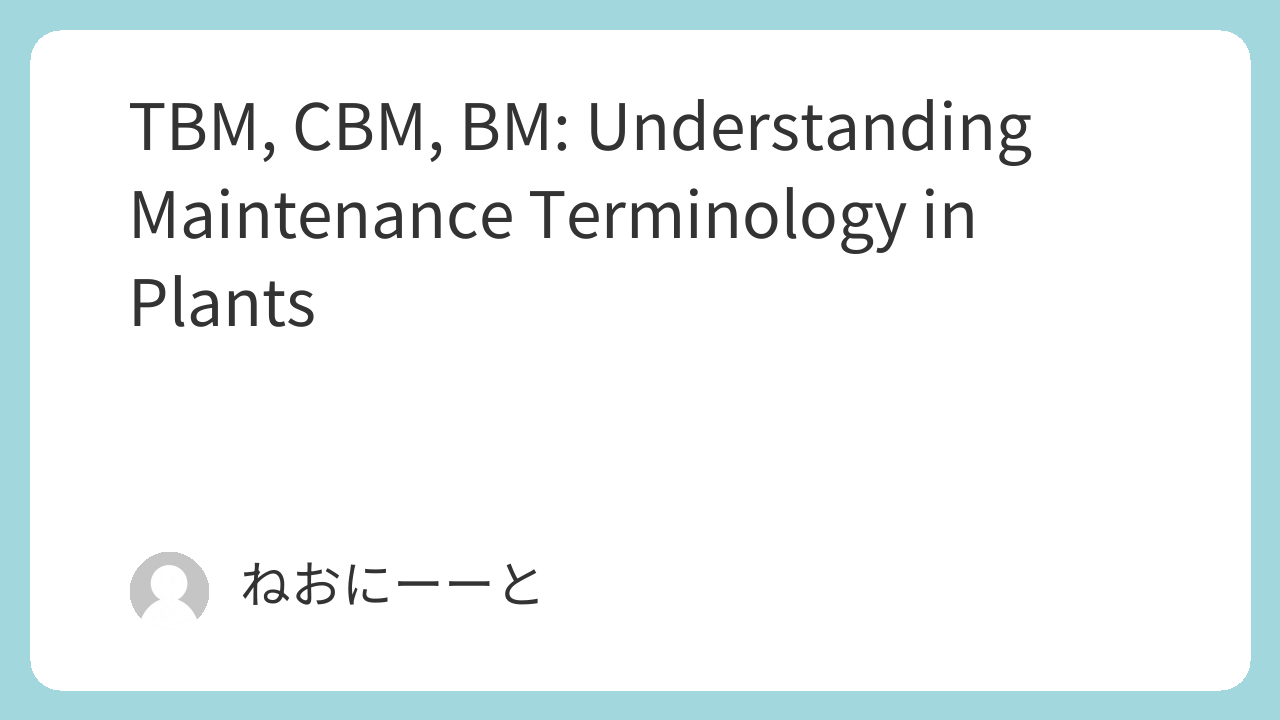In maintenance meetings or plant discussions, terms like TBM, CBM, and BM often come up. Yet, many engineers use these words “roughly” without fully understanding their meaning.
Even I’ve joined conversations thinking I understood them, only to realize later that I had misunderstood.
This article clarifies the basic maintenance terms, so you can use them correctly in your work. Mastering these three will make you feel confident as a maintenance engineer. Other abbreviations are nice to know, but not critical.
Common Confusions
One of the first confusions is Preventive Maintenance (PM). Some people use it broadly, while others mean a specific type like TBM or CBM. Examples:
- “We do preventive maintenance” → It may actually be CBM.
- “We prevent breakdowns” → It may be TBM in practice.
Preventive Maintenance (PM)
PM is the fundamental concept in modern maintenance. Simply put, it’s the idea of performing maintenance before equipment fails.
Before PM, plants often operated reactively: repair after failure, causing many downtime days in a year.
PM is typically implemented through three maintenance approaches:
- TBM – Time-Based Maintenance
- CBM – Condition-Based Maintenance
- BM – Breakdown Maintenance
In batch plants, knowing these three alone can meet TPM standards.
Time-Based Maintenance (TBM)
TBM schedules inspections or part replacements at fixed intervals.
Analogy: Annual health check-ups. Regardless of condition, you go every year.
TBM ensures equipment is checked and replaced regularly. Over-maintenance can occur if cycles are rigidly followed without considering actual wear.
About 20–30% of batch plant equipment typically falls under TBM.
Condition-Based Maintenance (CBM)
CBM relies on monitoring equipment condition to decide maintenance timing.
Analogy: Measuring body temperature daily and resting when feverish.
Difference from TBM:
- TBM: Replace parts at fixed intervals.
- CBM: Collect data regularly, then act based on condition.
CBM prevents over-maintenance but requires more labor for data collection. It’s usually applied only to critical equipment.
Breakdown Maintenance (BM)
BM addresses maintenance after equipment fails.
Analogy: Hard to find a human equivalent—but think of replacing something only when it breaks.
Not all equipment can be maintained with limited resources. Non-critical equipment may be left for BM. Deciding which equipment is BM is a key part of plant maintenance strategy.
Other Terms
- Corrective Maintenance (CM): Improving functionality, not just repairing failures.
- Maintenance Prevention (MP): Preventing equipment problems through design improvements, not just repair.
- Productive Maintenance (PM): Minimizing costs of equipment purchase, operation, and repair.
- Total Preventive Maintenance (TPM): Applying PM principles system-wide for comprehensive plant reliability.
Note: MP ≠ PM. MP is design-oriented; PM is maintenance activity itself.
Conclusion
Terms like TBM, CBM, BM are widely used, but definitions are often ambiguous. Focus less on “correct terminology” and more on understanding what the speaker actually means.
Stop for a moment in your plant and ask: How are “preventive maintenance” or “CBM” really applied here? You may gain a clearer understanding of maintenance in practice.

Comments